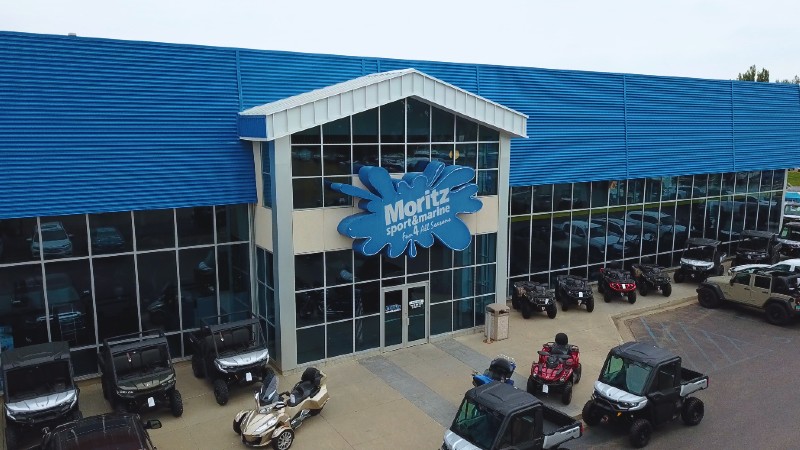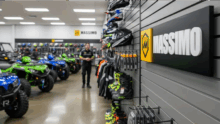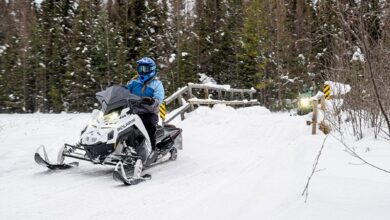North Dakota dealer’s auto experience helps SxS sales surge
Eric Moritz started in the car business before making the transition over to powersports, bringing along some of his automotive savvy to his new venture, incorporating strategies that have shot up sales of off-road machines, which are starting to resemble more like trucks than side-by-sides.

Moritz and his dad were both in the auto industry before purchasing a Chevy dealership in Bizmark, North Dakota, almost 30 years ago, and converting it into Moritz Sport & Marine. When his father retired in 2020, some of Moritz’s friends who owned car dealerships in the area took over the shares, integrating even more of the automotive philosophy into the dealership.
“The powersports business is about five years behind the auto industry. In technology, somewhat, but just how the business is run,” Moritz says.
“Powersports is slowly following auto, but still hasn’t caught up. But the industries are very similar, especially now with the new side-by-sides that are coming out.
One key adjustment was ensuring customer service was covered from every angle. This includes meetings with the sales manager, services and finance team, and accessories specialists. And this all happens at the sales desk, where customers are more comfortable. Moritz says he aims to streamline the sales process, making it a full-service dealership, where customers don’t just walk out with a unit, but with all the bells and whistles that go along with it.
“We’re focusing on the whole process — sales, service, P&A. We want to keep the customer as a long-term customer. Car dealers do a really good job at that. Our biggest thing is that we get the accessories they want when they purchase the machines,” he says.
UTV innovation and popularity
The dealership’s largest revenue generator — aside from its marine sales — is from Can-Am side-by-sides, specifically the full-cab Defenders. Before the Defenders dropped roughly 10 years ago, Moritz says the dealership was selling anywhere between 10 to 15 new units a year. Today, it sells around 300 new units a year, bringing in about $10 million annually from side-by-side sales alone, and that’s not including the 200 to 300 used ATVs and UTVs it sells.
Also indicative of the dealership’s growth in its UTV segment is the number of Can-Am techs currently staffed — 12 — double the number Moritz employed just a few years ago.
“It keeps busy all year, a couple of slow months in the winter, but we’re steady all year round. The UTV business has been a good complement to our company,” Moritz says.
The covered cab side-by-side sales growth also has a lot to do with the evolution of the machine. Now with heating and cooling systems and optional street-legal kit packages, the higher-end side-by-sides resemble more of a truck than a UTV. And with off-highway vehicles legal to drive on paved roads — excluding highways —in North Dakota, Moritz says customers are using the machines for transportation as much as they are for utility uses.
“We’ve seen a lot more interest in people wanting to buy them to drive around town. Especially the new cabs, because with the heating and air conditioning systems they got in them now, it’s like driving a car. Once we add the blinkers, horn, mirrors, and license plates to them, it’s legal to drive them throughout the whole state.” — Eric Moritz
Moritz says he is optimistic about new releases, like Can-Am’s brand-new Defender that’s completely updated from the ground up. He says it sounds like availability will be good and inventory shouldn’t be a problem. He commends Can-Am on its ordering structure, where orders can be placed monthly rather than annually, making it easy to adjust quickly if the market changes. Moritz did express some apprehension over pricing, however, with some side-by-side units with certain options and accessories approaching MSRPs you’d typically see on automobiles.
“Pricing is starting to become a concern,” he says. “These machines are getting close to $50,000 for some of these side-by-sides, so it’s an investment.”
Moritz will also be keeping an eye on the electric UTV segment, especially after Can-Am debuted the Outlander Electric ATV this summer, but has held off for now, largely due to limited range, charging infrastructure, and the investment it takes to train technicians and buy new tools.
“We’ve had customers inquire about it, but as it is with our current volume, I think we’re going to wait on electric,” he says. “Charging infrastructure is still not quite there yet, but it’s slowly getting better. The car dealerships around here are all-in on electric because the manufacturers push it, but I think we’re going to wait.”









